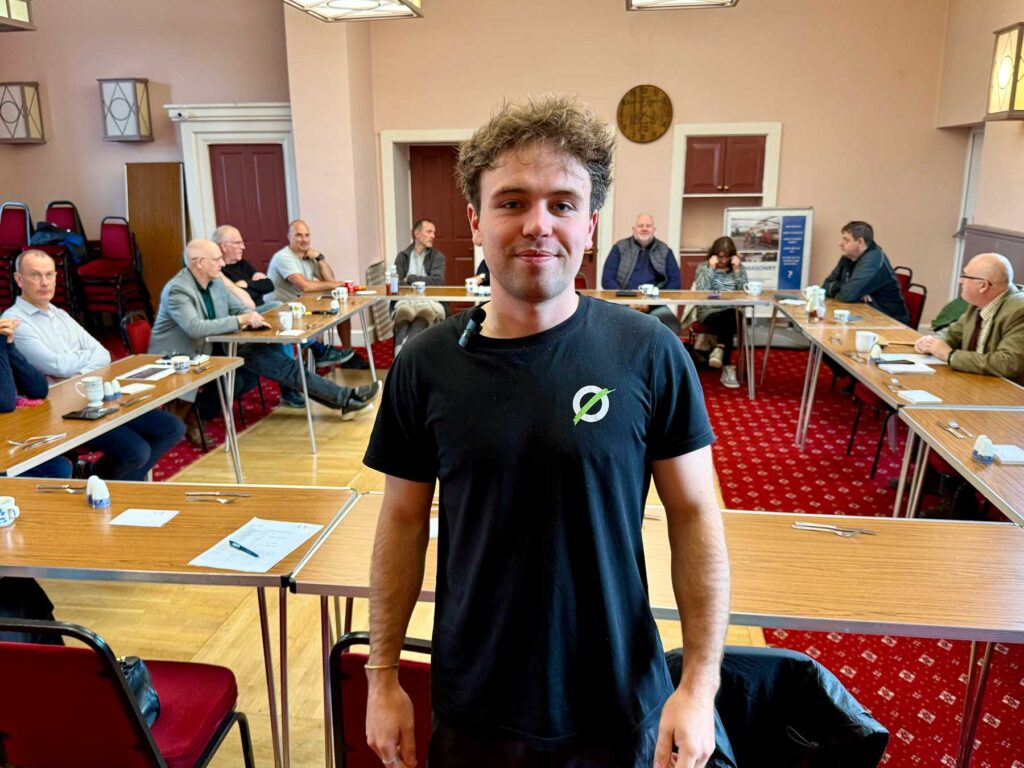Save Windermere – In Conversation with Campaign Founder Matt Staniek

Todays meeting was one of our liveliest yet. Eighteen members gathered over coffee to hear local conservationist Matt Staniek, founder of the Save Windermere campaign, share his story and field every question we could throw at him. Matt’s passion lit up the room, but business still got done: we exchanged four referrals and received more than £28,000 generated from past introductions. The Q&A below captures the highlights—read on for the abridged transcript that distils Matt’s key points and our biggest takeaways.
Q 1 — Matt, what first sparked the Save Windermere campaign?
A: I broke my neck in a car accident and, during rehabilitation, spent most mornings at the River Rothay where it meets Windermere. When lockdown lifted in 2020 the water looked markedly worse—murkier with slimy algal growth. Data then showed 1,700 hours of untreated sewage had been discharged from Ambleside Wastewater Treatment Works that year. I launched the campaign in July 2021 to stop sewage pollution entirely.
Q 2 — How serious is the sewage problem?
A: Six treatment sites around Windermere routinely spill, and all six have breached their permits between 2020-25. Even “treated” effluent is an issue: Windermere WwTW alone is licensed to release 5.5 million litres per day, every day. Because a drop of water stays in the lake for about nine months, those nutrients build up, driving toxic algal blooms.
Q 3 — What progress have you made so far?
A:
- Political traction: In March 2024 we persuaded both the Environment Secretary and the Opposition to adopt our objective—“only rainwater enters Windermere.”
- Regulatory change: The Environment Agency (EA) is now reviewing every discharge permit round the lake—some date back to 1989.
- Investment: United Utilities has earmarked £200 million for Windermere (triple the total of the previous 30 years).
- Enforcement: The EA is hiring extra officers for the catchment.
- Governance: We became a Community Interest Company in early 2023; a feasibility study led by a multi-stakeholder steering group begins this summer to map a full sewage-free roadmap.
Q 4 — Why did water quality appear to crash right after lockdown?
A: Mobile-data analysis (funded by the UK Space Agency) showed single-day visitor numbers spiking to 300,000. The sewer network was never built for that load, so more waste and storm overflow entered the lake. Algal growth and the disappearance of species like dippers below Ambleside WwTW were sudden, not gradual.
Q 5 — Isn’t Windermere classed as “Excellent” bathing water?
A: That rating is misleading. EA bathing tests run only May 15–Sept 30, once a week, and look at just E. coli and intestinal enterococci. They ignore blue-green algae, use a four-year rolling average and log-transform peaks. In 2022, Fell Foot failed on a raw sample but still held an Excellent label.
Q 6 — What does a permanent fix look like?
A: We favour a Lake Annecy-style solution: consolidate dispersed treatment works, pipe sewage around (not into) the lake, and discharge safely to tidal waters. United Utilities’ own 2013 report said a full diversion could be delivered in 10-15 years for £25 million (2013 prices). With £200 million now on the table, it is achievable.
Q 7 — How can business owners and residents help?
- Stay informed – Read our investigative blogs at savewindermere.com.
- Apply pressure – Write to MPs, the EA and United Utilities demanding that every penny of the £200 million goes into infrastructure, not PR “green-washing centres.”
- Support financially or with expertise – As we transition to charitable status, donations and professional skills (legal, engineering, comms) are invaluable.
- Share the story – Visibility drives action; post about Windermere’s plight on social channels and in your networks.
Q 8 — Where next for the campaign?
The next 12 months are pivotal. The feasibility study should end with a detailed roadmap; our aim is to secure legislative or policy backing that forces prompt delivery. We’ll also publish evidence of illegal discharges and seek accountability at board level for systemic under-investment.
Key Takeaways
- Scale of harm: Untreated and legally-treated sewage alike are degrading lake ecology, tourism and local fisheries.
- Momentum: A rare alignment of government, regulators and utility is in motion—driven by public scrutiny.
- Opportunity: With £200 million pledged, spades could be in the ground next year if pressure stays high.
- Your role: Knowledge, advocacy and community funding can accelerate a sewage-free Windermere for future generations.
